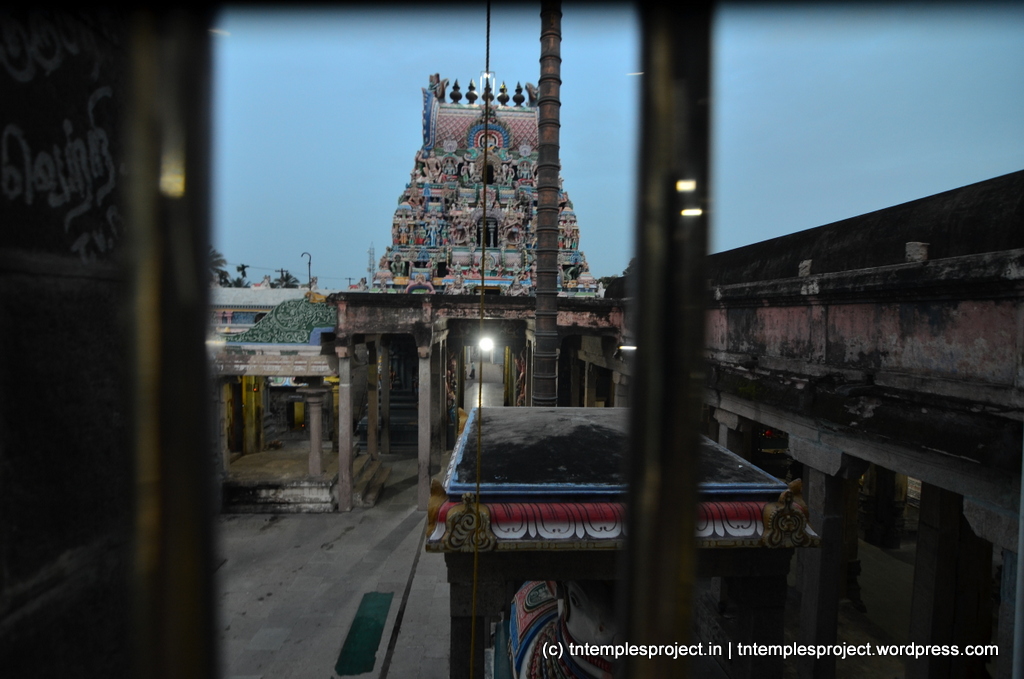Basic information about the temple
| Moolavar: | Kediliappar | Ambal / Thayar: | VAnamulai Ambal, Sundara Kuchambal |
| Deity: | Siva | Historical name: | TirukkeezhveLur |
| Vriksham: | Pushkala Vimanam | Teertham: | Saravana Poigai, Agni Teertham |
| Agamam: | Age (years): | Timing: | 6 to 12 & 5 to 9 | Parikaram: |
| Temple group: | Paadal Petra Sthalam (Kaveri Then Karai) | – | |
| Sung by: | Temple set: | ||
| Navagraham: | Nakshatram: | ||
| City / town: | Keezh Velur | District: | Tiruvarur |
| Maps from (click): | Current location | Nagapattinam (14 km) | Tiruvarur (16 km) |
| Mayiladuthurai (48 km) | Kumbakonam (54 km) |
Location
Sthala puranam and temple information

When the churning of the ocean was taking place, two drops of amritam fell on Bharata Varsha – one in the north and one in the south – which sprouted into Badari trees (Ilandhai, in Tamil). The place in the north where the nectar fell, is today called Badarikashramam (Badrinath), and this place (Keezh Velur) is the place in the south.
Two kings were separately cursed by sages to become donkeys, which were used by a trader to carry his wares. When the trader came to this place, the donkeys drank water from the temple tank, and got the power of speech as well as knowledge of their past. They started talking to each other, upon seeing which, the trader was terrified, and ran away. The donkeys started walking around the temple, when a celestial voice told them to drink water from the temple tank for five days starting with the full moon day in the Tamil month of Aadi (July-August). They did so and regained their original forms.
Siva here is worshipped as Akshayalingeswarar or Kediliappar, which mean the same in Sanskrit and Tamil respectively. “Kshaya” or “Kedu” refers to destruction, and so “A-kshaya” and “Kedu-ili” mean the opposite. There is also an association of this temple with Kubera, the god of wealth and plenty, and hence, a-kshaya (see box).
At this place, Kuberan came down in person to help a needy person called Chandragupta. On Akshaya Tritiya day, Kuberan worshipped Siva here, and was rewarded with the nine wealths, and also Sanga Nidhi and Padma Nidhi. Due to this connection, this temple is also regarded as a Kubera sthalam, and Kuberan has a separate shrine at this temple.
As with the Navaneetheswarar / Singaravelar temple at nearby Sikkal, this temple is also connected with Murugan’s slaying of Soorapadman. In order to wash off the sin of the killing, Murugan came here with his helpers. As guided by Siva, he bathed in the pond and created a murti of Vinayakar using turmeric (this temple is nearby, at a place called Manjadi). Murugan then asked Mayan, the celestial architect, to build a beautiful temple with a Pushkala Vimanam. Murugan also created the temple’s main Teertham – the Saravana Poigai – with his Vel, and hence the name of the place – Velur (as Velur grew westwards, this temple’s location automatically became the lower part of bigger village, and hence Keezh Velur). His helpers each also created their own Teerthams. Then Murugan began his penance, but was being disturbed the evil spirits of Veerahathi (the sin). So, he prayed to his mother Parvati, who in Her form as Bhadrakali, covered the five regions (four directions and the sky above), enabling Murugan to complete his worship. Kali at this temple is called Anjuvattathu Amman (anju = five, and vattam = region, in Tamil), who has a separate shrine in the north-east portion of the temple.

Anjuvattathu Amman does not receive usual abhishekam; instead, sambrani ennai (oil extracted from frankincense) is used, since the murti is made of plaster and not stone. Murugan at this temple is depicted as a youth, performing penance, and the murti of Murugan here and at Tiruchendur are said to have been crafted by the same sculptor. Vinayakar here is named Badri Vinayakar, after the Ilanthai tree.
Sage Markandeyar was advised by Siva to come here at the time of pralayam, as this was a place that would not be destroyed by the floods. Siva – as Natarajar – also performed a tandavam here, for sage Agastyar, who was able to sight Natarajar’s right foot. In this tandavam, Siva touches His right foot with all 10 of His hands.
The temple is built on what used to be a small hillock, called Chitrakootagiri. This is one of the 78 maadakoil temples built by Kochchenga Cholan. Inscriptions in the temple also refer to Raja Raja Chola I and a Thanjavur Maratha king named Thulajaji. In the Tevaram, Sambandar refers to this temple as Peruntirukkovil. This temple has also been sung upon and glorified in Muthuswami Dikshitar’s kriti, Akshaya Lingo Bhava.
The shrines of both Siva and Parvati face east, with the Goddess’ shrine to the right of the moolavar, indicating this to be a Kalyana Kolam depiction. There is a Lingam under the temple’s sthala vriksham, which is said to have been worshipped by Agastyar. The temple also features a unique Navagraham arrangement, with the nine planets in a row, rather than their typical square formation. In addition, the temple has some stunning architecture, including Veenadhara Dakshinamurti and Bhikshatanar.
The nine Teerthams established by Murugan and his retinue are today named: Saravana Poigai, Brahma Teertham, Sesha Teertham, Agni Teertham, Soorya Teertham, Chandra Teertham, Yama Teertham, Indra Teertham, and Kubera Teertham.
Other information for your visit
The evening haarati and puja rituals, which take place around 6 pm, is breath taking to watch. Devotees can schedule their visit accordingly, if that is possible.
Contact
Balasubramaniam Gurukkal: 96886 22618.
Gallery




























